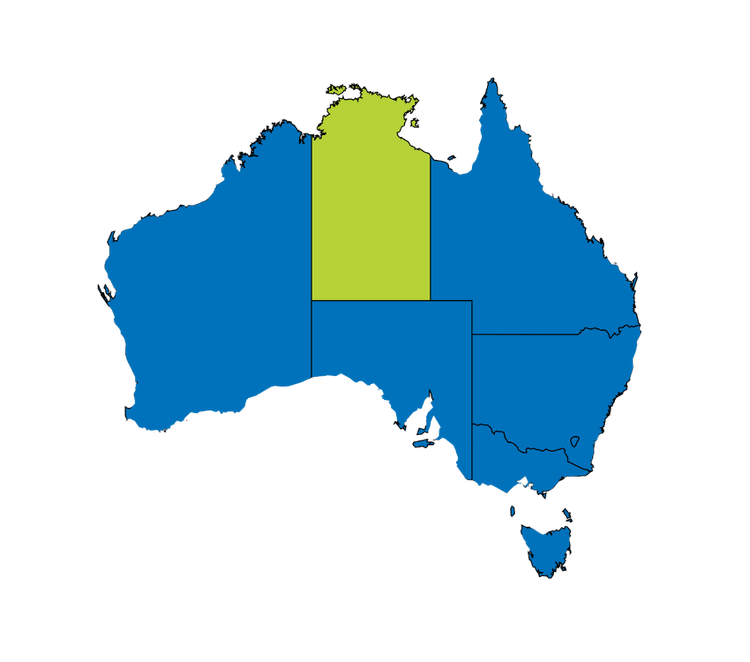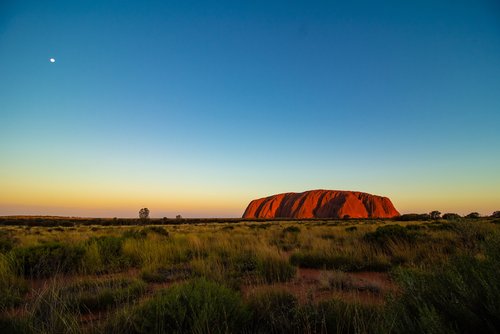



The Northern Territory (NT) covers 1.35 million square kilometres, with a population of 250,600. The economy is based largely on mining and petroleum.
The major population centres are Darwin and Alice Springs. 21,943 NT homes and businesses have a rooftop solar system connected to the main grid.
23,885 have installed a solar hot water system or air source heat pump, and 1,389 have a solar battery too. Not one single wind turbine has been installed.
(source – Clean Energy Regulator)
The Australian PV Institute estimates the percentage of dwellings with a PV system to be 25.6%. This means there is plenty of opportunity for the uptake of PV systems within the Northern Territory, it’s a total win-win for renewable energy.
Although installing a renewable energy system costs slightly more than in other Australian states, the number of solar systems installed grows each day, as more households realise the benefits that such a system has on their power bills and the environment. Take action today and see what the benefit would be for yourself too.
The Northern Territory will be home to the WORLD’S LARGEST solar farm, which will be a 12,000-hectare solar farm built near Elliot, north of Alice Springs. Once completed the NT Government stated that the Australian-ASEAN Power Link (AAPL) will be able to provide a significant amount of renewable energy for NT as well as up to 20% of Singapore’s electricity supply.
NT’s Electricity Grid

The Darwin-Katherine electricity grid is owned by the state government and energises around 150,000 households and small businesses. The Northern Territory Government has a 50% renewable energy target by 2030, and net zero emissions by 2050, with solar and batteries playing a key part in achieving this.
Along with thermal generation, high-spec batteries, virtual power plants and demand management initiatives. Power and Water is the corporation owned by the Territory Government and is responsible for electricity, water and sewage.
Jacana Energy is the electricity retailer of Power and Water, with the only other option for an electricity retailer being Rimfire Energy.
Rebates and Incentives
Government Incentive – Small-scale Technology Certificates (STC)
When you install a renewable energy solution, you are entitled to claim Small-scale Technology Certificates (STCs) against the cost of the system. An STC is equal to 1 megawatt-hour of renewable electricity, either generated or displaced by eligible small-scale renewable energy systems such as solar PV, wind, hydro, solar water heaters and air source heat pumps.
The STCs are part of the Australian government’s Renewable Energy Target. STCs fluctuate a little in the marketplace and are generally always claimed on the customer’s behalf by the retailer installing your system.
You can claim them yourself via the REC Registry, however, it is much easier to allow your trusted and endorsed installer to claim them on your behalf. At the time of writing this, STCs are trading at $40 each, however, they have been as low as $16 per STC.
To see an up-to-date price please click here. At $40 per STC, this means for a 5kw inverter with 6.6kw of panels one can expect a reduction of $ 3,000.
The Clean Energy Regulator provides a free STC Calculator for you to establish how many STCs your renewable energy solution will generate. If you would like to see what your STC rebate would be with a ‘live’ price right now!
Greenbank Environmental can provide this here.
Feed-in tariffs (FITS)
Within NT you will be eligible for a payment for any electricity you export back to the grid that you do not consume. This is known as a Feed-in Tariff.
Currently, the Feed-in Tariff is 8.3c (Jacana Energy) and 11c (Rimfire Energy). This includes all energy you export back to the grid, be it from solar panels, wind turbines, batteries or electric vehicles.
Electric Vehicles (EVs)
The NT Government is currently waiving the stamp duty for the sale of plug-in EVs up to $50,000, meaning a saving of $1,500. As well as waiving the registration fee, providing a saving of $91 annually.
From July 2022, there was an EV charger grant scheme available too, 100 x residential ($1000) and 80 x business ($2,500) grants available.
